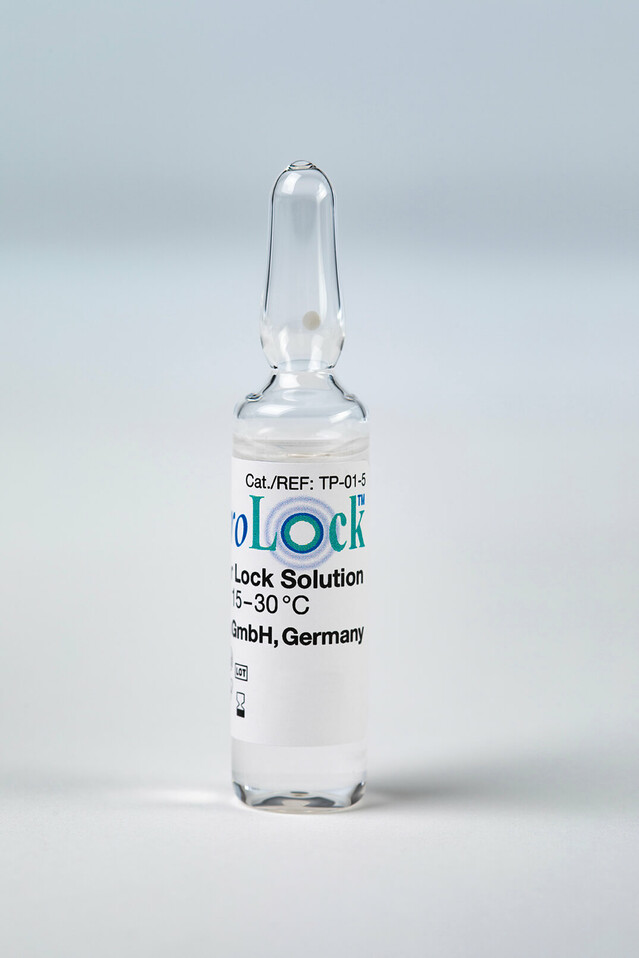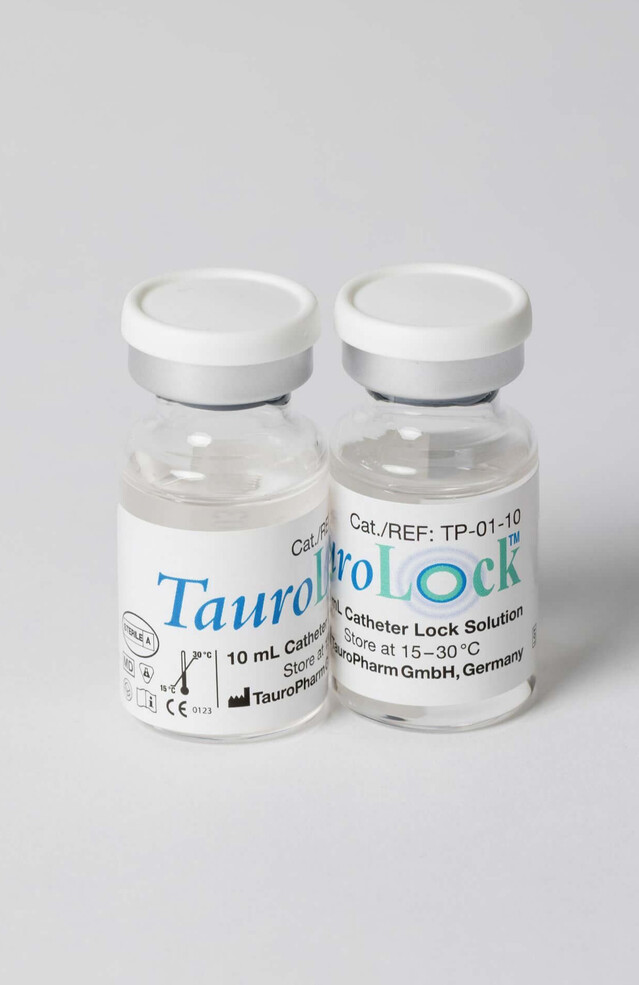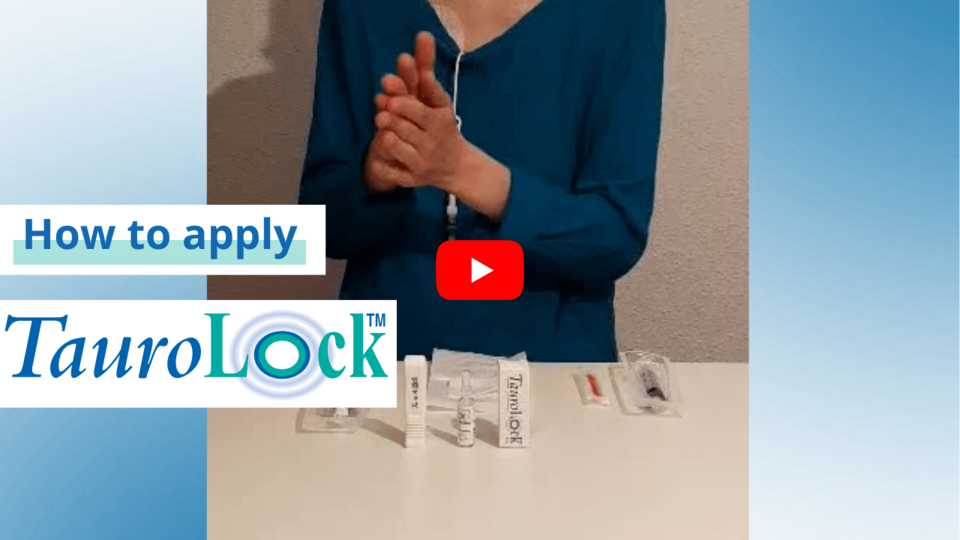TauroLock™
TauroLock™ is a catheter lock solution with antimicrobial and anticoagulant efficacy. Here, you can find detailed information about the product, its active ingredients, and application.

Indication and effect
TauroLock™ has been approved for instillation into all central-venous catheters (CVC). As a bactericidal and fungicidal lock solution, it prevents the formation of biofilm: Patients remain protected against catheter-related infections and occlusion. We recommend TauroLock™ for all vascular access devices (VADs) in parenteral nutrition, oncology, and – as an alternative to TauroLock™-HEP500 or TauroLock™-U25.000 – in dialysis.
Composition
The two active ingredients of TauroLock™ are taurolidine and 4 % citrate. Taurolidine has a broad antimicrobial activity (incl. MRSA and VRE) against gram-positive and gram-negative bacteria and fungi (e.g. Candida). Citrate works as an anticoagulant and helps to maintain an adequate flow rate within the catheter.
Expert recommendations
Taurolidine-based lock solutions such as TauroLock™ are recommended in national and international guidelines. Generally, the product can be used for CVCs in:
Please note that patients must always consult with their attending physician before applying TauroLock™.

Contraindications
TauroLock™ should not be used for patients who:
- have displayed allergic reactions to either citrate or taurolidine
- are currently taking medication incompatible with either citrate or taurolidine
Safety
Before using the device, you need to aspirate TauroLock™ with a syringe and then flush the VAD with saline. If aspiration is not possible, you can also flush out the solution with saline. Should TauroLock™ inadvertently enter the bloodstream, it will quickly degrade into the amino acid taurine. Slow flushing is therefore clinically tolerable. Do not flush lock solutions in infants and children less than two years of age.
Package sizes
TauroLock™ is available in two sizes:
- single dose: ampoules of 3 ml or 5 ml (10 ampoules per box)
- multiple dose: vials of 10 ml (100 vials per box)
Storage & transport
TauroLock™ must be stored at temperatures between 15 °C and 30 °C. Ampoules are single-dose, vials are multi-dose and should be used within 48 hours. Please note that you must not freeze TauroLock™ under any circumstances.
More about TauroLock™
International guideline recommendations, e.g. ESPEN 2020:
“Recommendation 34: As an additional strategy to prevent CRBSIs, taurolidine locking should be used because of its favorable safety and cost profile. Grade of Recommendation B - Strong consensus (100% agreement).”
Recommendations for locking the CVAD
Locking with non-antibiotic antibacterial substances (in particular, 2% taurolidine) has been proven effective in pediatric patients in reducing the risk of infection. (BI)
The use of thrombolytic substances (urokinase 5000 IU/ml or the tissue activator of plasminogen - rTPA 1 mg/ml) is recommended only in case of occlusion of the catheter lumen due to clots. (A II)
Between dialysis treatments, the central venous access device may be locked using a diluted heparin solution. Heparin, however, does not have any antibacterial properties. Antibacterial lock solutions should be preferred since they reduce the rate of catheter-related bacteraemias considerably. The use of antibiotics cannot be recommended due to the potential development of resistance. Alternatively, citrate in various concentrations (4 %, 30 % or 46 %) as well as taurolidine-citrate solutions may be considered. Due to the risk of severe cardiac arrhythmias, highly concentrated citrate must be strictly administered by trained staff according to the instructions of the manufacturer. Citrate at 4 % has proven effective against low potential of complications and is the broadly accepted standard amongst citrate lock solutions at present.
For personal inquiries, feel free to contact us via phone or email.
Our international distributors based in more than 50 countries will answer your requests ASAP.



